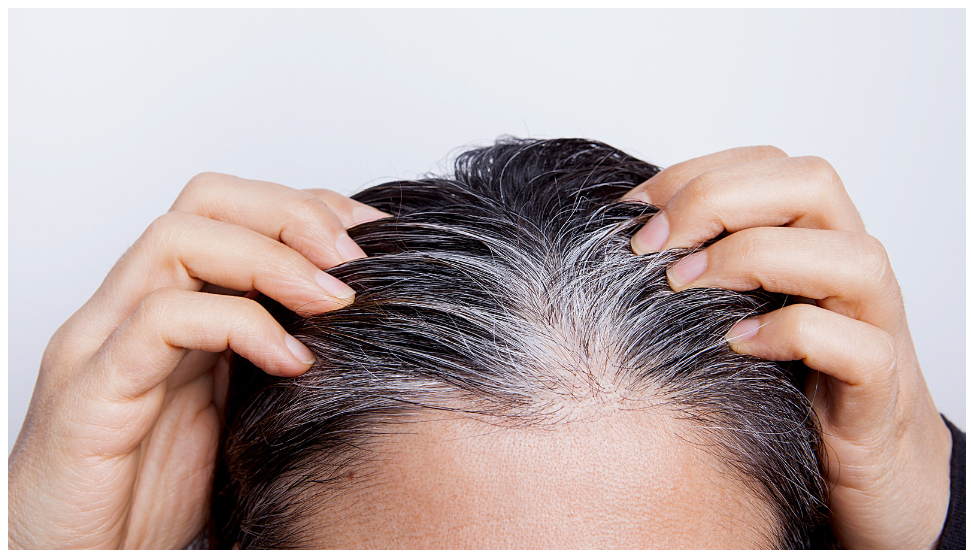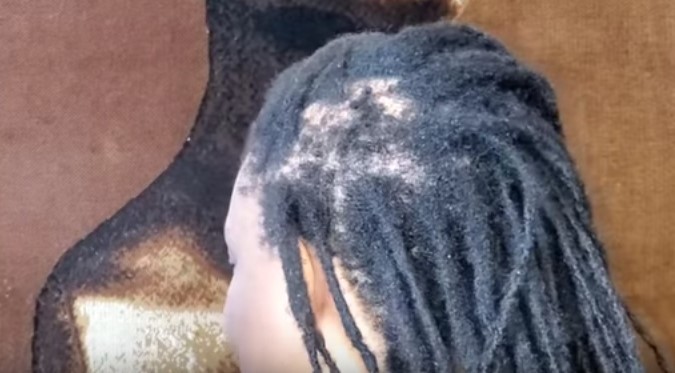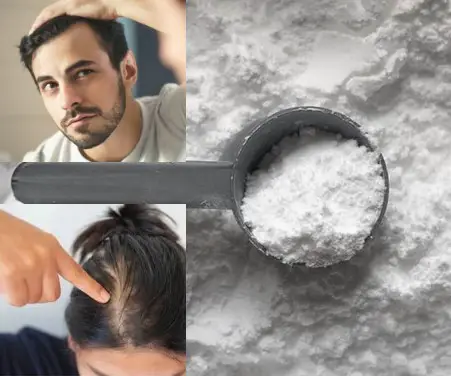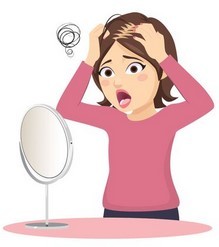Hair thinning at crown female causes can be a distressing issue, impacting self-esteem and confidence. In this comprehensive guide, we delve into the causes, treatments, and preventive measures for hair thinning at the crown in females. Whether it’s hormonal changes, medical conditions, or certain hair care practices, understanding the cause is the first step towards finding an effective solution.
Hair thinning, particularly at the crown, is a common concern for many women. It can be a source of distress, affecting self-esteem and confidence. Understanding the causes and potential remedies for this issue is crucial in managing it effectively. In this comprehensive guide, we delve into the topic of hair thinning at the crown in females, exploring its causes, treatments, and preventive measures.
Hair thinning can be triggered by a variety of factors, from hormonal fluctuations and medical conditions to genetic predisposition and certain styling practices. It’s important to remember that you’re not alone in this journey, and there are numerous strategies and treatments available to combat hair thinning.
In this article, we’ll discuss the causes of hair thinning, including hormonal fluctuations, medical conditions, genetics, and styling practices. We’ll also explore various remedies and treatments, such as medical treatments, natural remedies, nutritional changes, and hair care practices.
We’ll also address common queries in our FAQ section and provide preventive measures and lifestyle changes that can help maintain healthy hair.
So, whether you’re currently experiencing hair thinning, or you’re looking to understand more about this issue, this guide is for you. Let’s dive in and unravel the mystery of hair thinning at the crown in females.
Read more about female pattern baldness and its causes to gain a deeper understanding of this topic.
Stay tuned as we delve deeper into this topic, providing you with the knowledge and tools to manage and overcome hair thinning.
Key Takeaways
- Hair thinning at the crown in females can be caused by various factors, including hormonal fluctuations, medical conditions, genetics, and styling practices. Understanding the cause is the first step towards finding an effective solution.
- There are numerous treatments available for hair thinning, from medical treatments like Minoxidil and Finasteride to natural remedies and lifestyle changes.
- A balanced diet, regular exercise, proper hair care, regular check-ups, and stress management can all contribute to the health of your hair.
- If you’re experiencing significant hair thinning, don’t hesitate to seek help. Consult with a healthcare provider to determine the cause and find the most effective treatment for you.
Causes of Hair Thinning at the Crown in Females
Understanding the causes of hair thinning at the crown in females is the first step towards finding effective solutions. Here are the main factors that contribute to this condition:
Hormonal Fluctuations
Hormonal changes are a common cause of hair thinning in women. Fluctuations in hormone levels can occur during various stages of a woman’s life, such as post-pregnancy and menopause, and can lead to hair thinning.
For instance, during pregnancy, women often experience thicker, fuller hair due to increased estrogen levels. However, after childbirth, these levels drop, causing the hair to enter the shedding phase. This can result in noticeable hair thinning, particularly at the crown.
Thyroid conditions can also lead to hormonal imbalances, causing hair loss. Both hypothyroidism (low thyroid function) and hyperthyroidism (overactive thyroid) can contribute to hair thinning.
If you’re experiencing hair thinning along with other symptoms such as fatigue, weight changes, or mood swings, it might be worth discussing with your healthcare provider to rule out any hormonal issues.
Learn more about the impact of hormonal fluctuations on hair loss.
Medical Conditions
Various medical conditions can lead to hair thinning. Scalp infections, for instance, can cause hair loss, although this is usually temporary and resolves once the infection is treated.
Hair-pulling disorder, also known as trichotillomania, is a mental health condition where a person feels compelled to pull out their hair, leading to hair loss and thinning.
Alopecia areata is an autoimmune condition that causes patchy hair loss, which can sometimes affect the crown.
Polycystic ovary syndrome (PCOS), a condition characterized by hormonal imbalance in women, can also lead to hair thinning.
If you suspect a medical condition might be causing your hair thinning, it’s important to consult with a healthcare provider for a proper diagnosis and treatment plan.
Read more about medical conditions that can cause hair loss.
Genetics
Genetics play a significant role in hair thinning. Female-pattern baldness, also known as androgenetic alopecia, is a hereditary condition that causes hair to thin and fall out.
In female-pattern baldness, hair typically thins at the crown and parting line. Unlike male-pattern baldness, the hairline usually doesn’t recede.
If you have a family history of hair thinning or baldness, you may be more likely to experience it yourself.
Styling Practices
Certain hair styling practices can contribute to hair thinning. Overuse of heat styling tools, such as straighteners, curling irons, and hair dryers, can damage the hair and lead to breakage and thinning.
Similarly, chemical treatments like hair dye, relaxers, and perms can weaken the hair structure, causing it to fall out.
Tight hairstyles, such as ponytails, braids, or buns, can cause traction alopecia, a type of hair loss caused by tension on the hair.
To protect your hair, try to minimize the use of heat and chemical treatments, and opt for loose hairstyles that don’t pull on the hair.
Learn more about how styling practices can affect hair health.
In the next section, we’ll explore various remedies and treatments for hair thinning at the crown. Stay tuned!
Remedies and Treatments for Hair Thinning at the Crown
Once you understand the causes of hair thinning at the crown, the next step is to explore the various remedies and treatments available. Let’s dive into some of the options:
Medical Treatments
Medical treatments can be highly effective in treating hair thinning. One of the most common treatments is Minoxidil, a topical medication that you apply to your scalp. It works by prolonging the growth phase of hair follicles, leading to thicker, fuller hair.
Finasteride is another medication used to treat hair loss. It’s a prescription drug that works by blocking the production of a hormone that causes hair loss.
Red light therapy cap is a newer treatment that uses low-level laser light to stimulate hair follicles, promoting hair growth.
Remember, it’s important to consult with a healthcare provider before starting any new treatment.
Natural Remedies
Natural remedies can also be beneficial for hair thinning. Saw Palmetto, for instance, is a plant with small berries that has been used for centuries to treat hair loss. It’s believed to block an enzyme that converts testosterone into a hormone linked to hair loss.
Other natural remedies include essential oils like rosemary and lavender, which can stimulate hair growth when massaged into the scalp.
While natural remedies can be helpful, it’s important to remember that results can vary, and what works for one person might not work for another.
Nutritional Changes
Your diet plays a crucial role in hair health. Nutritional deficiencies can lead to hair thinning, so it’s important to consume a balanced diet rich in vitamins, minerals, and proteins.
Iron, in particular, is essential for hair growth. A deficiency can cause hair loss, especially in women.
Vitamins A, B, C, D, E, and zinc are also important for hair health. Incorporating foods rich in these nutrients can help improve hair growth and thickness.
Hair Care Practices
Proper hair care practices can go a long way in preventing and treating hair thinning. Here are some tips:
- Avoid heat and chemical treatments: These can damage your hair, leading to breakage and thinning. Opt for natural drying and styling methods whenever possible.
- Be gentle: When washing and brushing your hair, be gentle to avoid breaking the hair strands.
- Choose the right products: Use a mild, sulfate-free shampoo and a conditioner that’s suitable for your hair type.
In the next section, we’ll answer some frequently asked questions about hair thinning at the crown in females. Stay tuned!
FAQs: Hair Thinning at Crown Female Causes
Hair thinning at the crown in females is a complex issue, and it’s natural to have questions. In this section, we’ll answer some of the most frequently asked questions on this topic.
Why am I losing hair at the crown as a female?
Hair loss at the crown in females can be due to various factors, including hormonal changes, medical conditions, genetic predisposition, and certain hair styling practices. It’s important to consult with a healthcare provider to determine the exact cause and find the most effective treatment.
Can thinning hair on crown grow back?
Yes, in many cases, thinning hair can grow back, especially if the cause is temporary, such as stress or nutritional deficiencies. However, in cases of genetic hair loss, the hair may not grow back on its own. Treatments like Minoxidil, Finasteride, and red light therapy can help stimulate hair growth.
What vitamin deficiency causes hair loss?
Deficiencies in certain vitamins, such as vitamin D, B-vitamins, and iron, can lead to hair loss. A balanced diet rich in these nutrients can help maintain healthy hair. In some cases, supplements may be recommended by a healthcare provider.
How to stop hair fall immediately?
While it’s not always possible to stop hair fall immediately, certain measures can help reduce hair loss and promote growth. These include maintaining a healthy diet, avoiding heat and chemical hair treatments, and using gentle hair care practices. If hair fall persists, it’s important to consult with a healthcare provider.
When I pull my hair, it falls out easily. Why?
If your hair falls out easily when pulled, it could be a sign of telogen effluvium, a condition caused by physical or emotional stress where hair follicles enter the resting phase prematurely. It could also be due to over-styling or using harsh hair products. If you’re concerned about excessive hair fall, it’s best to consult with a healthcare provider.
In the next section, we’ll discuss preventive measures and lifestyle changes that can help maintain healthy hair. Stay tuned!
Preventive Measures and Lifestyle Changes
Prevention is always better than cure. By adopting certain preventive measures and lifestyle changes, you can help maintain the health of your hair and potentially slow down or prevent hair thinning. Here are some strategies:
Healthy Diet
A balanced diet rich in essential vitamins, minerals, and proteins can significantly impact your hair health. Include foods rich in iron, zinc, and vitamins A, B, C, D, and E in your diet.
Omega-3 fatty acids, found in fish, walnuts, and flaxseeds, can also promote hair health.
Remember, your hair is a reflection of your overall health. Eating a balanced diet can help ensure your hair gets the nutrients it needs to stay strong and healthy.
Learn more about the role of Sweet Potato for Hair Growth and the other 8 Foods Can Prevent Hair Loss: Scientists Top Pick In 2023.
Regular Exercise
Regular exercise can help maintain healthy hair by improving blood circulation and promoting the delivery of nutrients to your hair follicles. It also helps manage stress, which can contribute to hair thinning.
Whether it’s a brisk walk, yoga, or a gym workout, find an exercise routine that you enjoy and stick to it.
Proper Hair Care
Proper hair care practices can go a long way in preventing hair thinning. Here are some tips:
- Avoid heat and chemical treatments: These can damage your hair, leading to breakage and thinning. Opt for natural drying and styling methods whenever possible.
- Be gentle: When washing and brushing your hair, be gentle to avoid breaking the hair strands.
- Choose the right products: Use a mild, sulfate-free shampoo and a conditioner that’s suitable for your hair type.
Regular Check-ups
Regular check-ups can help detect any underlying health conditions that might be causing hair thinning. If you’re experiencing significant hair loss, it’s important to consult with a healthcare provider. They can help determine the cause and suggest appropriate treatments.
Stress Management
Stress can contribute to hair thinning. Incorporating stress management techniques, such as meditation, deep breathing, and yoga, into your daily routine can help manage stress levels and potentially reduce hair thinning.
In the next section, we’ll wrap up our comprehensive guide on hair thinning at the crown in females. Stay tuned!
Conclusion
Hair thinning at the crown in females can be a distressing experience, but it’s important to remember that you’re not alone. Many women experience this issue, and there are numerous treatments and strategies available to manage it.
Understanding the causes, whether it’s hormonal fluctuations, medical conditions, genetics, or styling practices, is the first step towards finding effective solutions. From medical treatments like Minoxidil and Finasteride to natural remedies and lifestyle changes, there are many paths to healthier hair.
Remember, your hair is a reflection of your overall health. A balanced diet, regular exercise, proper hair care, regular check-ups, and stress management can all contribute to the health of your hair.
If you’re experiencing significant hair thinning, don’t hesitate to seek help. Consult with a healthcare provider to determine the cause and find the most effective treatment for you.
In the end, it’s not just about having a full head of hair, but about feeling confident and comfortable in your own skin. We hope this guide has provided you with valuable information and resources to help you on your journey towards healthier hair.
For more information on hair health and treatments, check out the following articles:
- Iron Deficiency Hair Loss Early Stage Female Pattern Baldness
- Exploring the Use of Saw Palmetto for Hair Loss in Females
- Late Stage Traction Alopecia: Understanding and Managing
- What’s the Real Cause of Balding | 6 Reason why hair loss!
Remember, every hair journey is unique. Be patient with yourself, and take it one step at a time. You’ve got this!
Note: This article is intended to provide general information and should not be used as a substitute for professional advice. Always consult with a healthcare provider for diagnosis and treatment.
- AI Powered Bald Filter Online 2024: See Yourself with No Hair! - January 19, 2024
- Harklinikken Bad Reviews 2024: Analyzing Negative Feedbacks - January 18, 2024
- How to Get the Alex Eubank Hair | Step-By-Step Tutorial 2024 - January 18, 2024







